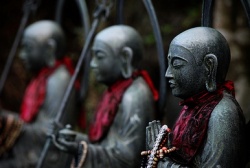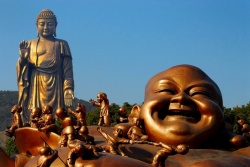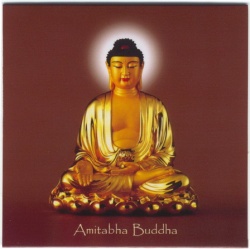History and Lineage of Esoteric Chinese Buddhism
by Robert Waggoner
Before Buddhism spread from India, the ideas and practices of Confucius and Taoist philosophy permeated the people’s life throughout much of present day China. As Buddhism entered China, it blended with many of these traditional practices and awakened considerable interest in spiritual matters.
During the Eighth Century reign of the Tang Emperor, Hsuan-Tsung, the Esoteric form of Buddhist practices and ideas were introduced to present day China. Buddhist scholar and Yale professor, Stanley Weinstein, writes,
“In the year 716 the Indian Tantric master, Subhakarasimha arrived in Ch’ang-an with a collection of Sanskrit texts. According to an early source, he was well received by Hsuan-Tsung, who made him compete with a Chinese thaumaturge miracle worker] in a test of magical skills….The other important Indian Tantric master who received Hsuan-Tsung’s patronage was Vajrabodhi…who arrived in Canton in 719 after a one year stay in Sri Lanka, then a center of Esoteric Buddhism….It is clear that Hsuan-Tsung was interested in Vajrabodhi chiefly because of the latter’s reputed magical talents. Thus when drought threatened in 726, Vajrabodhi, at the request of the Emperor, performed various Esoteric rites to avert the impending disaster. Similarly his services were called upon when the Emperor’s favorite daughter was taken seriously ill.” (from Buddhism Under the T’ang by Stanley Weinstein, pg 54-55)
A young disciple of Vajrabodhi, Amoghavarja (also known as Pu-k’ung) mastered the Esoteric teachings, and spread Esoteric Buddhism throughout the region. “According to one account,” Weinstein notes, “when an insurrection broke out in the An-hsi region in 742, Hsuan-Tsung summoned Amoghavajra to court to offer prayers for victory. Amoghavajra chanted a sutra dedicated to the protection of the empire and uttered mystical incantations while Hsuan-Tsung held an incense burner. In due course the Emperor saw an apparition of an army of heavenly beings who, Amoghavajra asserted, would crush the rebels in An-hsi. A few months later, the account concludes, Hsuan-Tsung received a letter from the field headquarters reporting that the rebels had fled because of divine intervention.” (pg 56-57)
Amoghavajra did much to translate Buddhist texts and spread Esoteric Buddhist teachings more widely. He continued to assist the Emperor Su-Tsung, who succeeded his father, and possessed a more intense fascination with Esoteric Buddhism, even allowing an Esoteric Buddhist chapel to be constructed in the Imperial Palace, where the homa (fire purification) ritual could be performed. Clearly by this time, Hanmi Esoteric Buddhist practice had become the official position of the T’ang rulers.
In succeeding years, Buddhism suffered greatly under the rule of Emperor Tang Wuzong, who sought to ban the teaching and halt the increasing influence and power of Buddhism. Sacred texts were burned, small and large temples destroyed, and many Buddhist were persecuted. During this time, Hanmi Esoteric Buddhism was forced underground. Disciples of Amoghavajra fled. One of these, Hui-guo, passed on his knowledge to Kukai who went to Japan, where he helped establish the Japanese Esoteric school of Buddhism, which came to be known as the Shingon sect.
Another disciple of Amoghavajra, Huisu, had received all the religious instruments and dharma transmission. He then became the Dharma Lineage Bearer of the Chinese school of Esoteric Buddhism. Since then, Hanmi has existed for over twelve centuries, even though generally unknown and considered vanquished.
The Hanmi lineage has been passed on through one master per generation. Master Yu Tian Jian is the highest and only living master of Hanmi, the Honorable Abbot of the 1000-year old LongQuan Temple in Chifeng, Inner Mongolia, a doctor of Chinese medicine, and acknowledged as a Living Buddha in China. Master Yu, from Chaoyang, Liaoning, at the age of 39, attained realization under the guidance of Grandmaster Huiling, the 48th Maha-Acharya of the Hanmi lineage. Master Yu passed from the physical realm on December 23, 2011 at 9:09 a.m. in Chaoyang City, China.
Source
[ http://hanmibuddhism.org/HistoryLineageofHanMi.aspx hanmibuddhism.org]



